Get ready to step into the future as we take you through a “Gorgeous House Project with Glass Walls.” This article will showcase an innovative design that seamlessly blends architecture with nature, providing panoramic views and abundant sunlight. From glasshouse interiors that play with light and shadow, to gardens that appear to be part of the living space, this is a new definition of living in harmony with nature.
Explore the ethereal beauty of modern glasshouse designs, and be inspired to create your own sanctuary of peace and light.
Gorgeous glass house by iconic architect Philip Johnson

Philip Johnson was one of the most famous architects of the 20th century, but also one of the most controversial. Because of his ability to quickly get carried away by new currents, and then just as quickly abandon them, he himself called himself, to put it mildly, very windy. His most famous work can certainly be called the Glass House, built in the late 1940s.
Before his death in 2005, the architect transferred this house to the National Trust for Historical Preservation, which now conducts tours there for everyone.
brief information
- Year of construction completion: 1949;
- Architect: Philip Johnson;
- Location: New Canaan, Connecticut, USA;
- Size: 160 square meters.
The architect was born in 1906 and completed a master’s degree from Harvard in 1943. Before becoming an architect, he was the director of the Department of Architecture at the Museum of Modern Art, as well as the curator of the International Exhibition of Contemporary Architecture, which introduced Americans to European modernism.
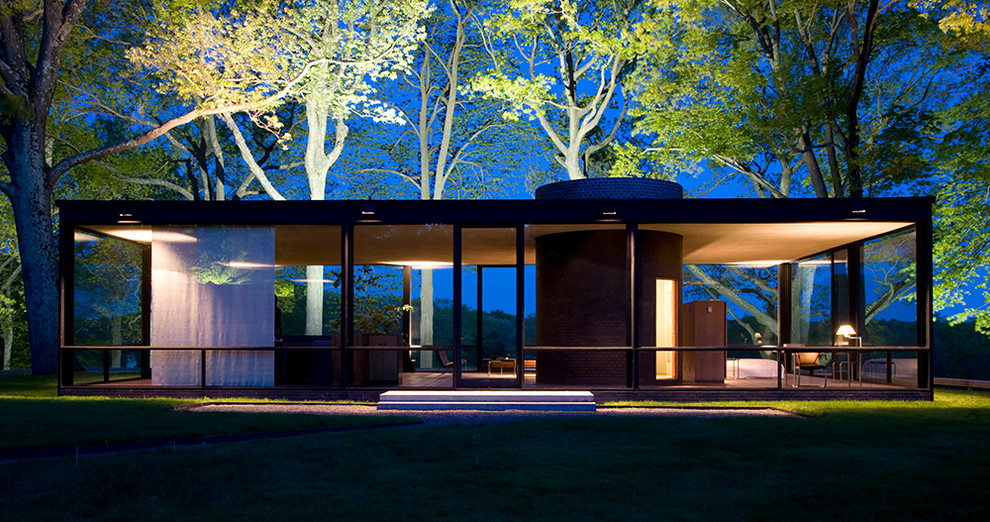
He was a large landowner and designed ten houses just for himself. How did he do it? Mostly because of the family fortune that his father made in aluminum mining.
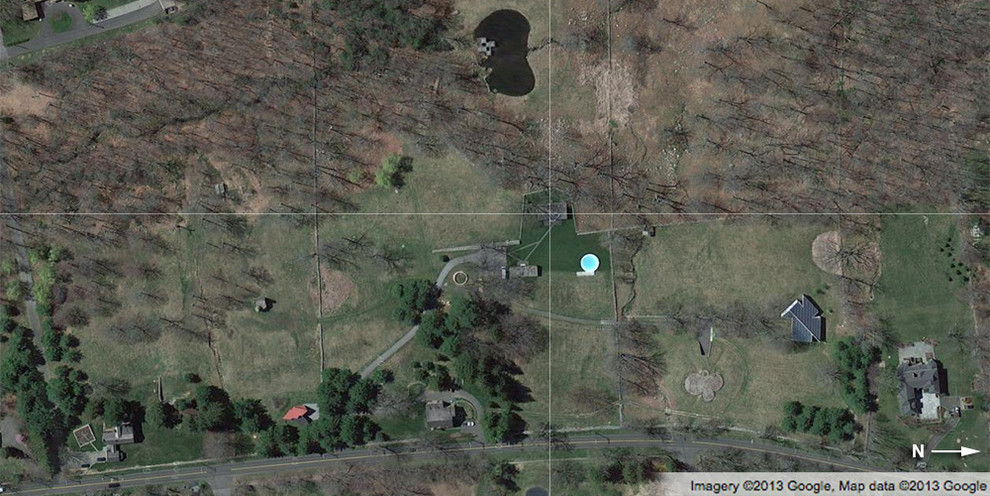
After graduating with a bachelor’s degree in 1930, Johnson purchased a small piece of land and began planning the house, which later became a glass house. His idea was based on the idea of another architect, Ludwig Mies van der Rohe, to build a glass house for a wealthy client. However, the two projects are markedly different.

Over the years, the purchased land grew, and this masterpiece of architecture was installed in the center of the property.
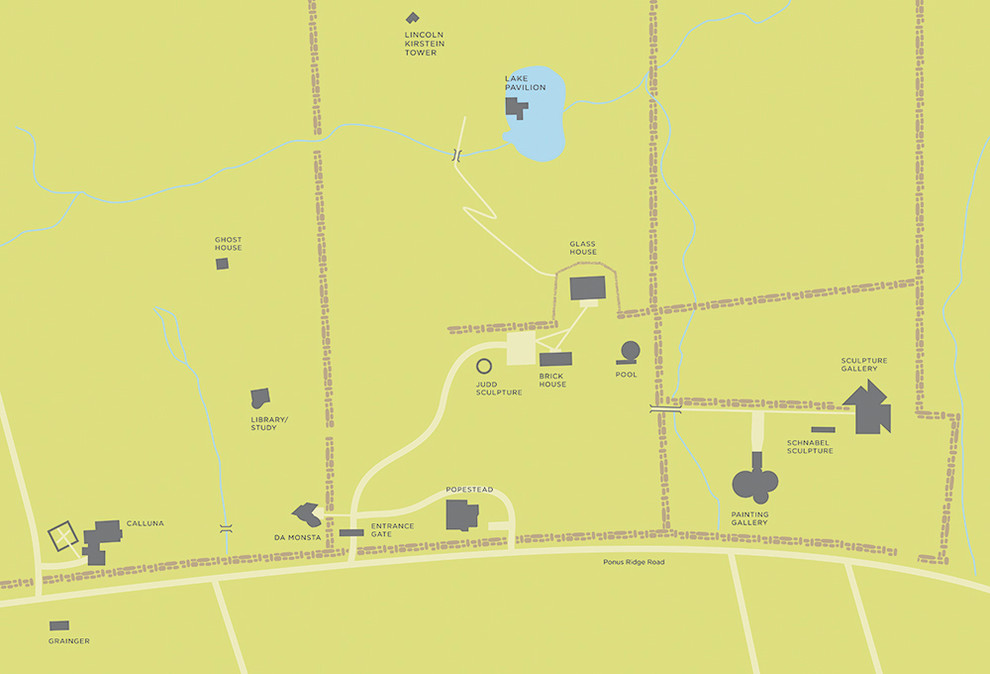
Inspired by the diagonal paths leading to the Pantheon in Athens, Johnson used this solution here as well.
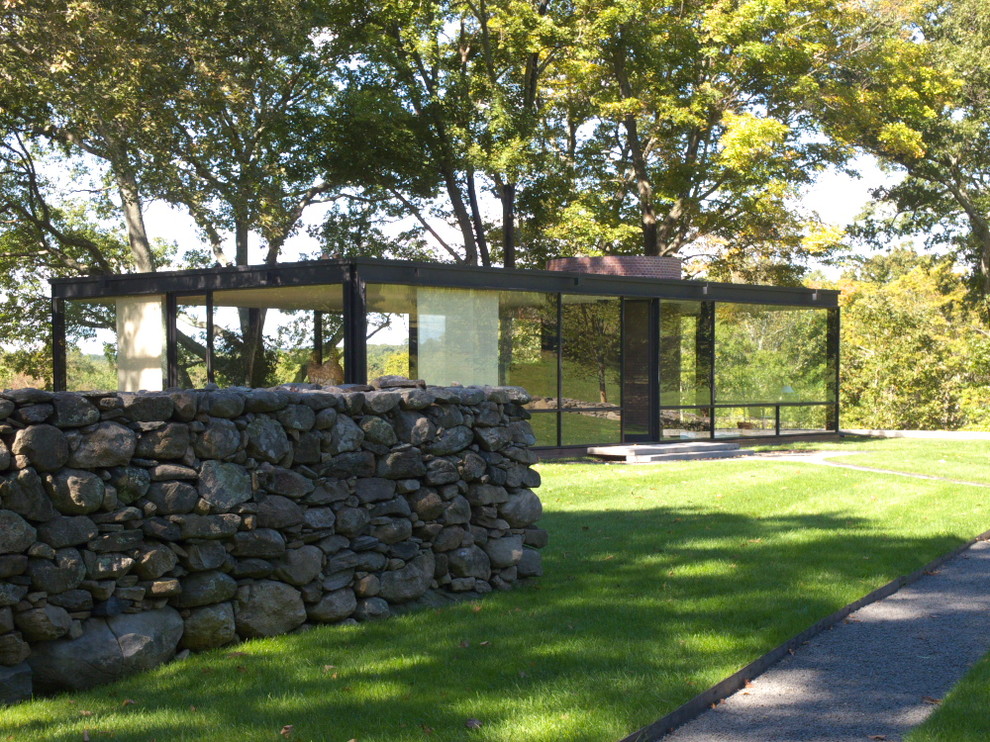
The most frequently asked question by visitors is: where did the owner sleep? The answer will shock you. In a brick house.
Of course, there is no question of any privacy in a glass house, so he built a second one, made of brick. Both buildings look at each other, the lawn separates them.
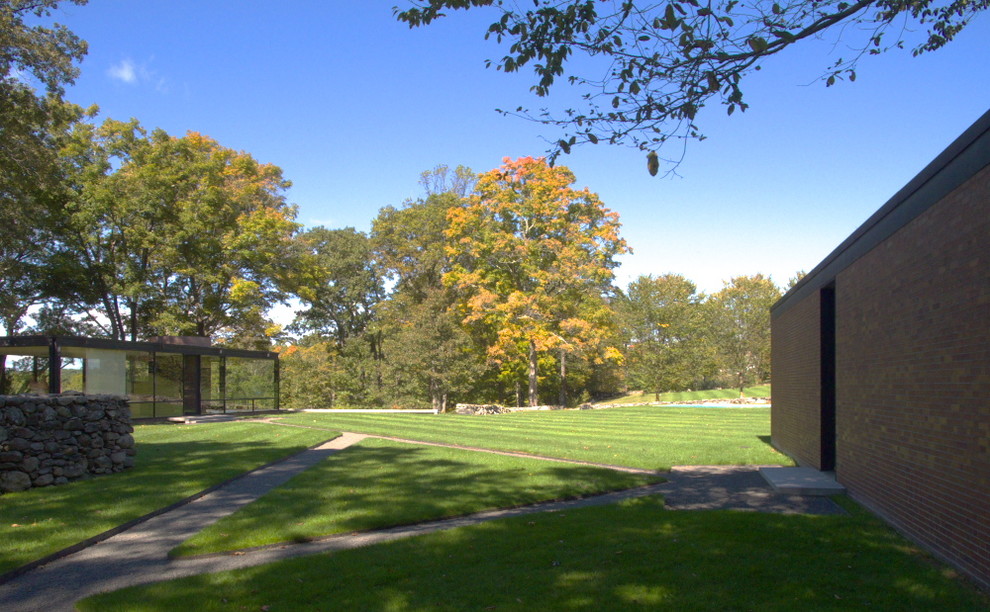
Three materials were used in the construction of the Glass House: glass, steel and brick. The glass panels are huge, but not floor to ceiling. Doors are located at different ends of the building so that it can be easily ventilated.
They worked with steel very carefully so that it was not noticeable, like the structure of the frame.

Brick paved floors and bathrooms. The pattern is built in such a way that there is no clear line between the room and the street.
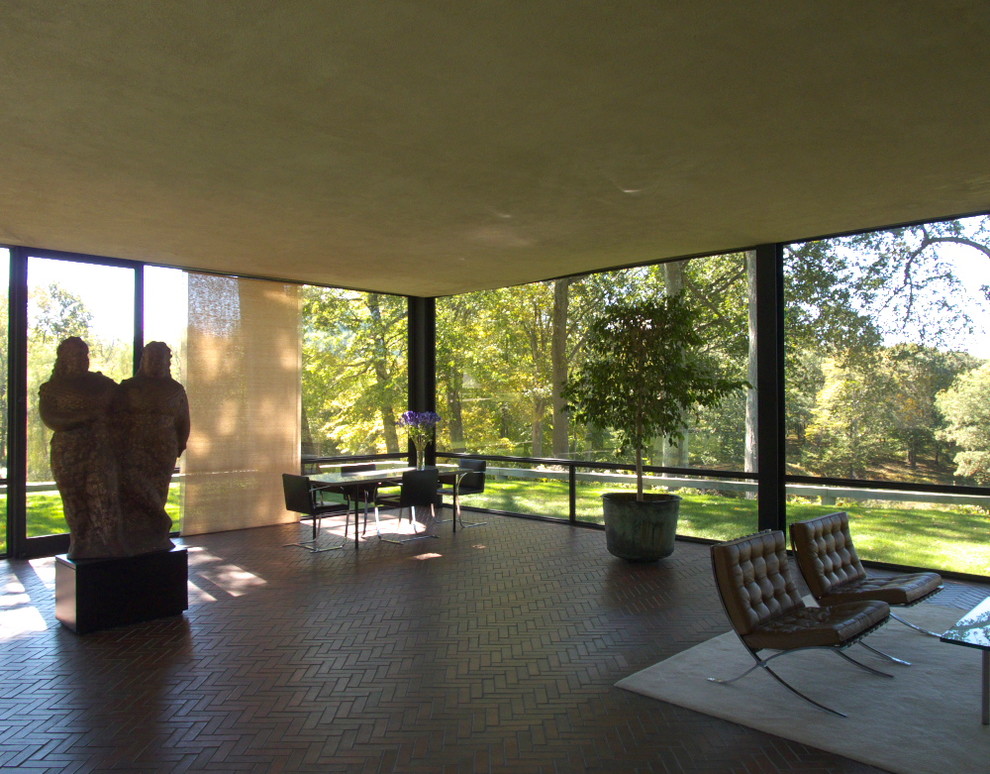
The brick cylinder breaking through the roof is visible from all sides. Johnson was inspired to do this by a trip to Poland, where he saw a burned-out house, of which nothing remained but the foundation and the stove.
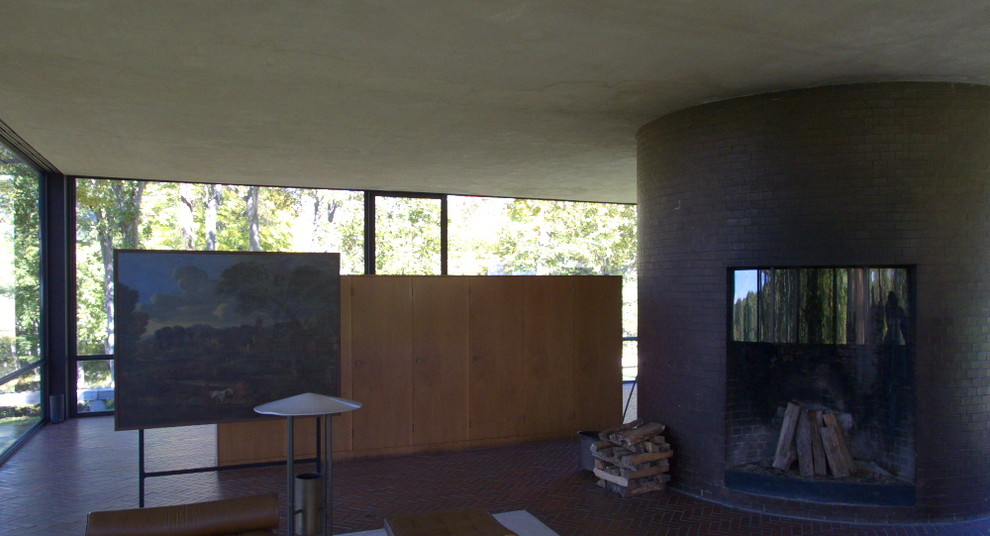
A wooden partition separates the bedroom and living room. Although the bed indicates that the architect stayed in this house from time to time, it is clear that living here permanently would be very inconvenient, although the windows could be covered with retractable panels.
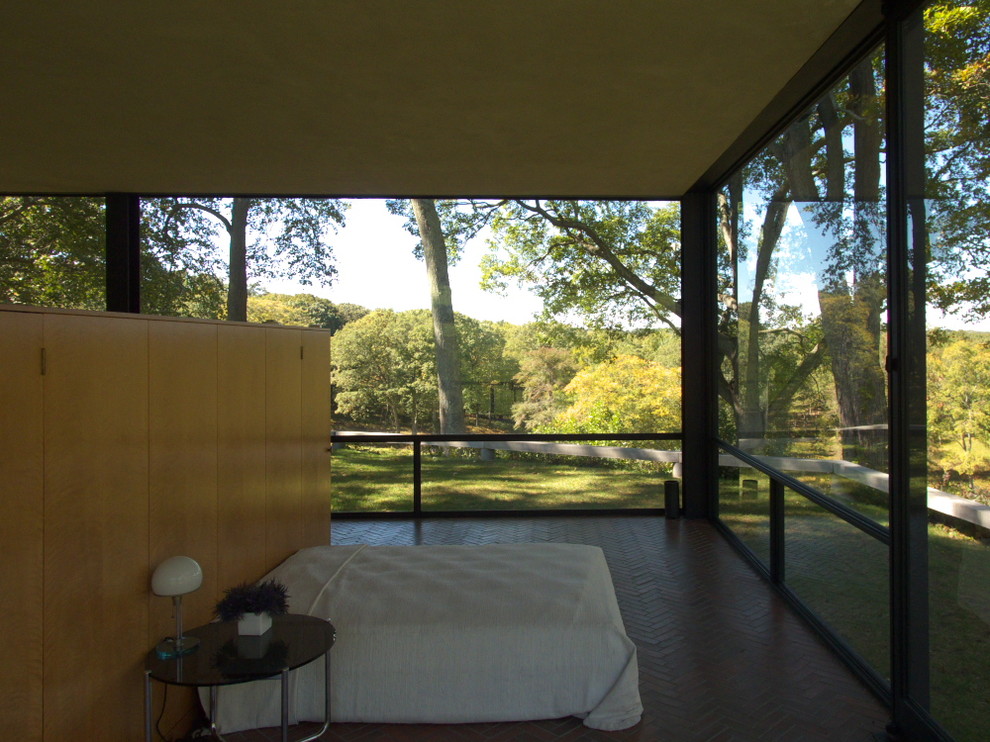
The house is located on top of a hill and this does not allow it to completely merge with the surrounding landscape.

However, the close connection of the home with nature is important. Later, Johnson erected several more buildings near the lake.
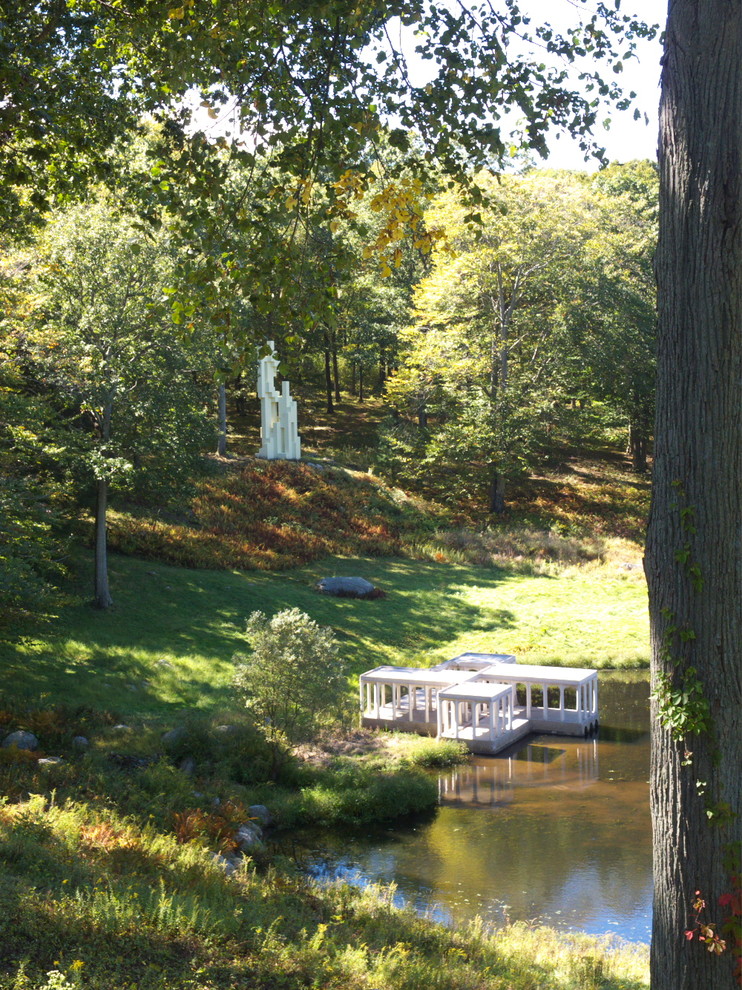
The architect’s love for eclecticism is expressed in some other details, for example, in this gallery, the construction of which was inspired by the Greek catacombs.
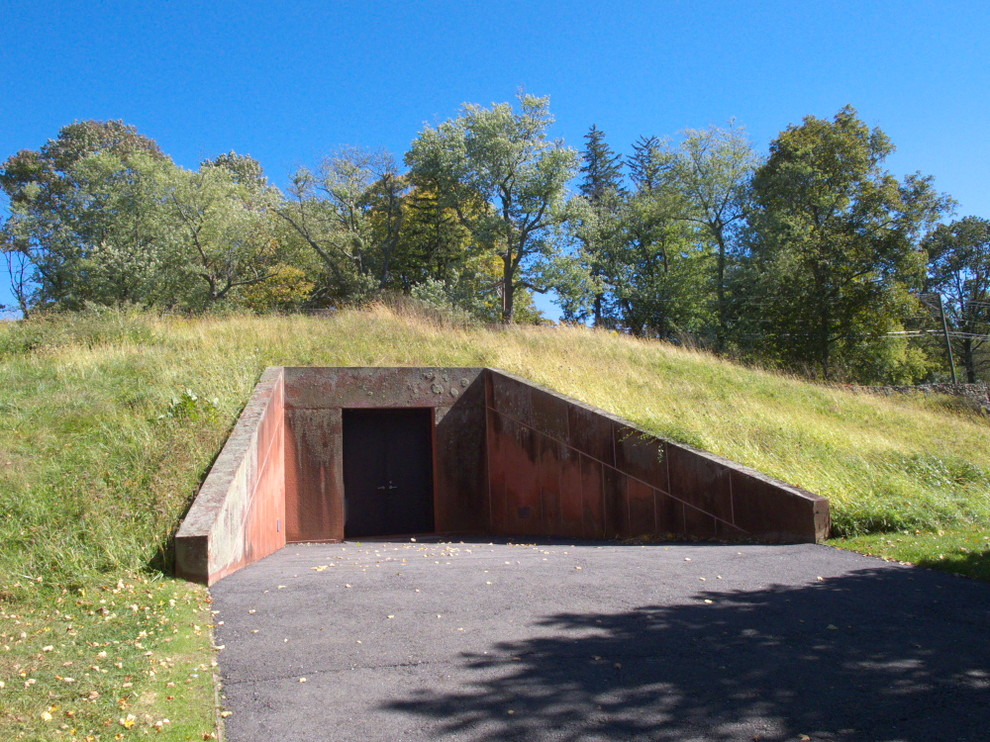
And this is an office and a library that was originally white. The building has only one room with one window.
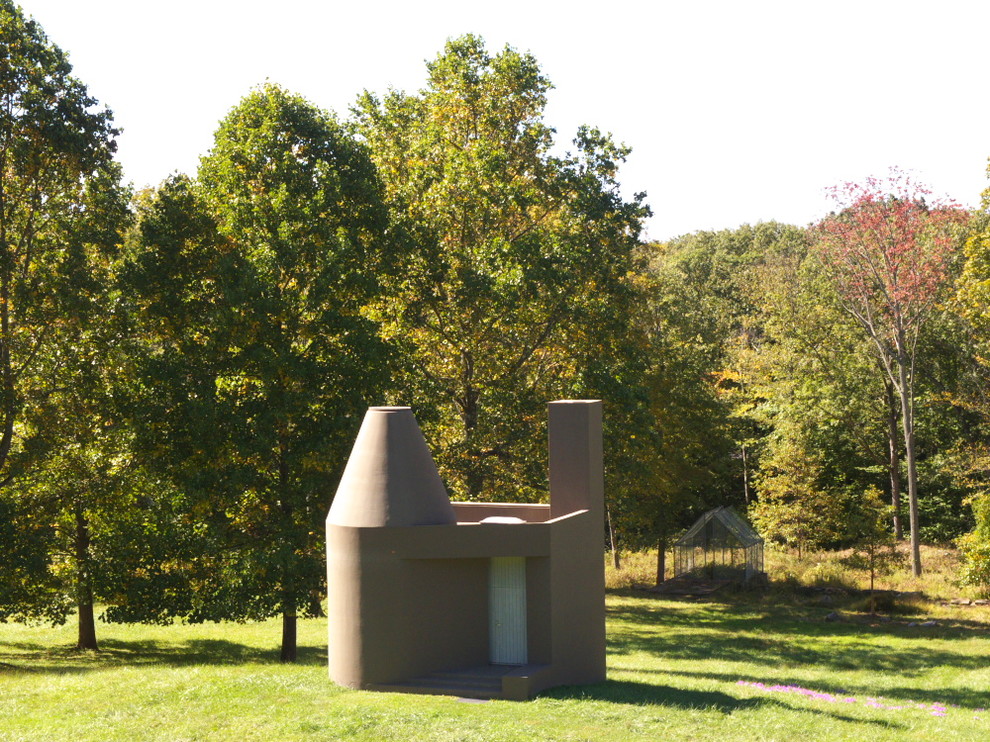
Da Monsta was the last building built on the land by Johnson in 1995. It was supposed to serve as a reception room for the house-museum, but the residents of neighboring houses were against it because it could obstruct traffic. Therefore, now visitors enter the property from the opposite side.
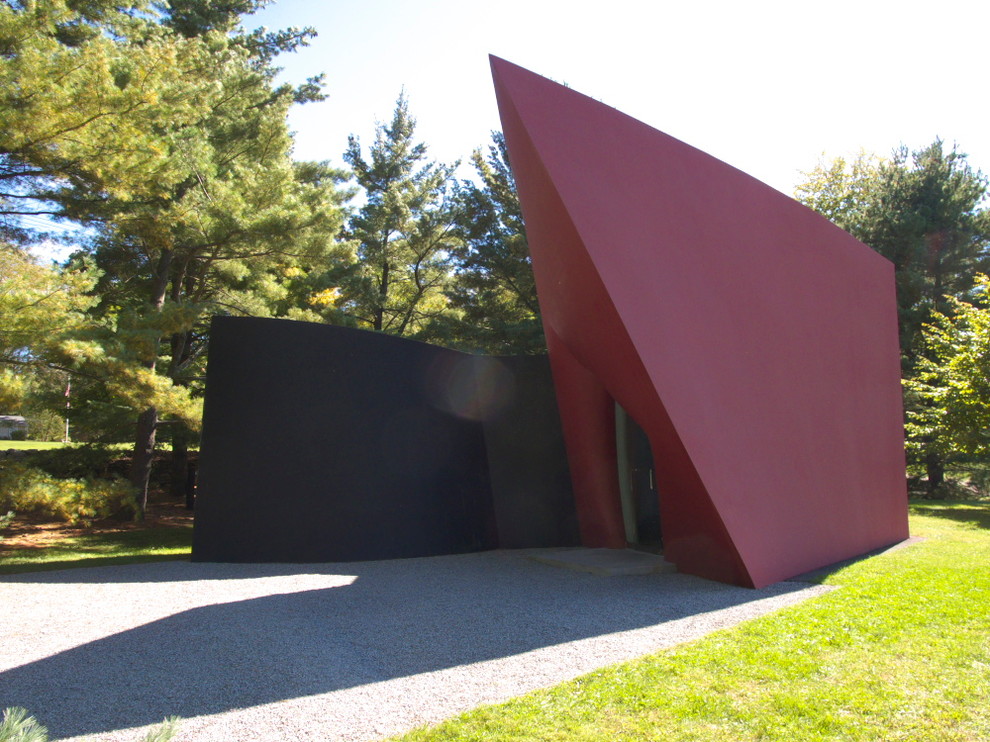
Only three zones are visible on the plan: a round bathroom, which is also a boiler room, a separated bedroom and living room, and a kitchen that served as a bar during the many parties that the owner of the house adored.
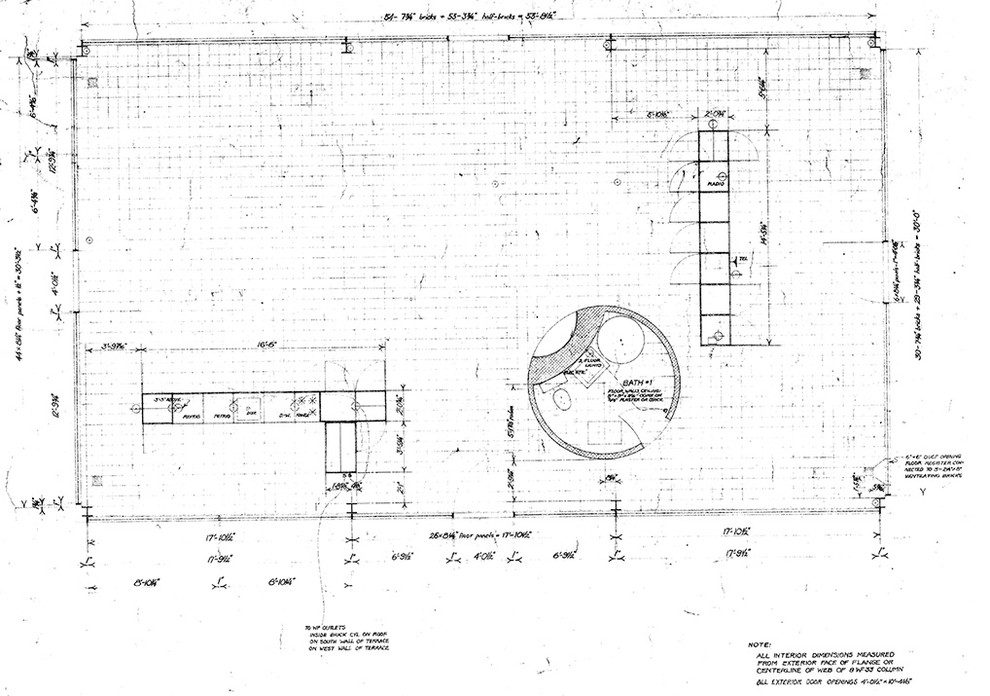
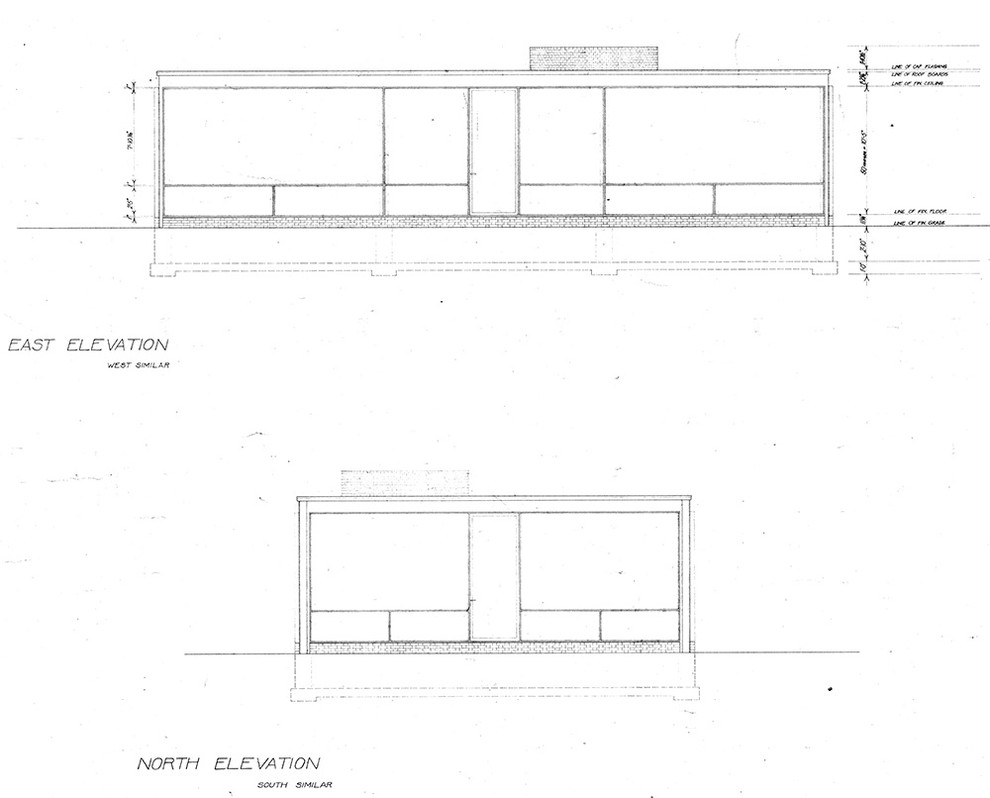
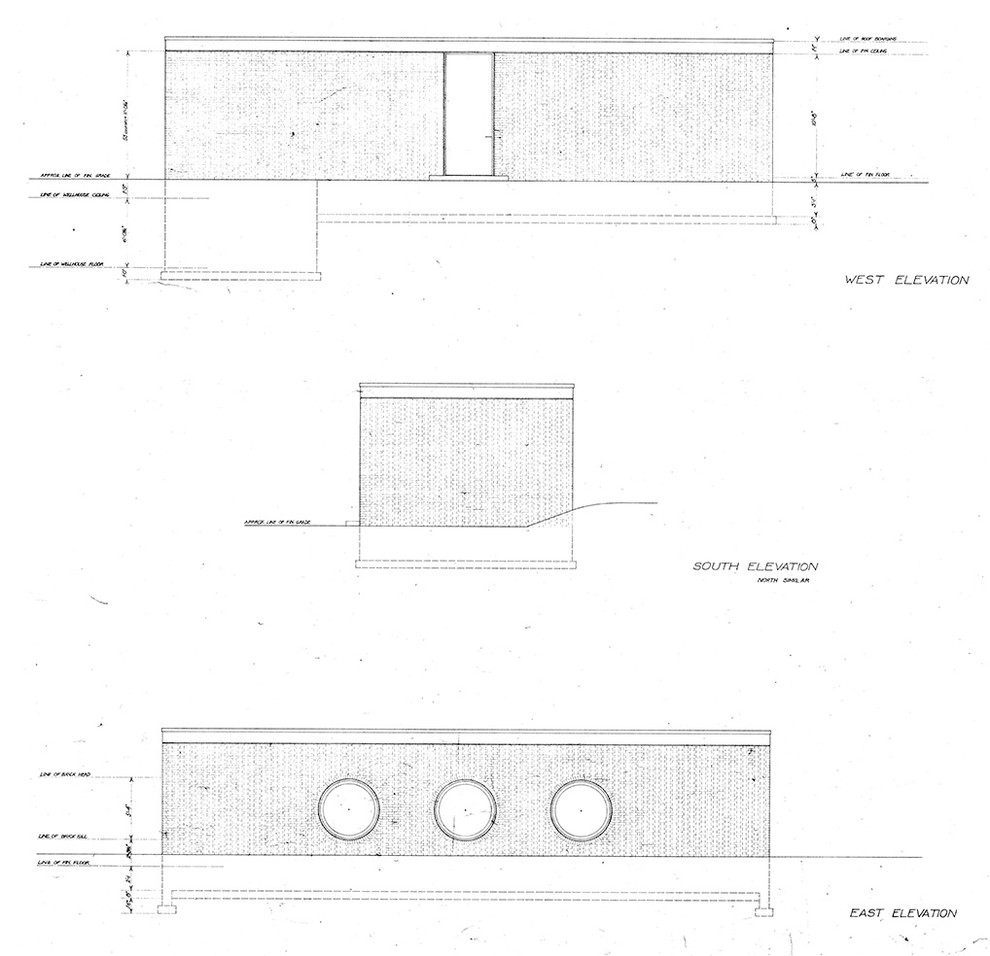
Sources
- Farnsworth House and The Glass House. Modern Views. Assoline, 2010.
- Frampton, Kenneth and Larkin, David. American Masterworks: The Twentieth Century House. Rizzoli, 1995.
- Gorlin, Alexander. Tomorrow’s Houses: New England Modernism. Rizzoli, 2011.
- The National Trust for Historic Preservation. The Glass House. Rizzoli, 2011.
- Philip Johnson Glass House, National Trust for Historic Preservation.